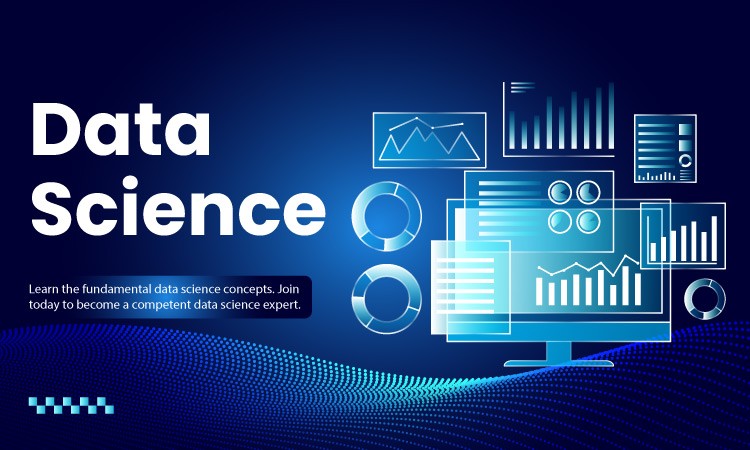In modern technical world, Artificial Intelligence (AI) and Data Science are among the most powerful technologies. Artificial intelligence mimics human intellect using computers. Data Science uses statistical and analytical tools to generate insights from data. Together these fields produce improved systems which are capable of learning, adaptation, and decision-making. For complete guidance, think about enrolling in the Data Science Course in Noida. This powerful combination of technologies is changing healthcare, finance, transportation, and several other industries by driving automation and innovation.
Data Science and Artificial Intelligence Working Together
AI and data science are not only compatible, but they are also intertwined and provide the basis for numerous contemporary technologies and uses. Though they are different disciplines, they fit together very well.
Understanding the Basics
Using statistics, programming, data visualization, Data Science obtains insights from both structured and unstructured data. It facilitates decision-making by way of data gathering, cleaning, transforming, analysis, and interpretation.
Artificial Intelligence, on the other hand, refers to the creation of systems and machines that can imitate human intelligence. This technology is used for problem solving, logic, learning, and auto-correction.
How They Work Together
Let us now understand how Data Science and AI work together:
1. Data as Fuel for AI
Large volumes of data are needed for artificial intelligence systems, especially those based on machine learning (ML), to learn and develop. Data science offers the methods and instruments necessary to collect, process, and manage this information. AI algorithms cannot operate well without good data.
2. Model Development
Data scientists build predictive models using artificial intelligence techniques like deep learning and machine learning. Image recognition, natural language processing, fraud detection, and recommendation systems are all examples of tasks these models can perform. One can join the Data Science Course in Gurgaon to learn how to integrate Data Science with AI models.
3. Decision Making
Analysing historical data using data science facilitates trend and pattern discovery. Through automated judgments and pattern-based predictions, AI reduces the need for human involvement and boosts efficiency significantly.
4. Automation
Artificial intelligence can automate extensive Data Science tasks like fraud detection or data cleaning. This enables data scientists to focus on strategic analysis and problem-solving for organizations.
5. Continuous Learning
AI models learn constantly from fresh information supplied by data science pipelines. This feedback loop lets systems evolve and get better over time without specific programming.
Real-World Examples
- Healthcare: Models of data science powered by artificial intelligence forecast disease outbreaks, help with diagnosis, and customise treatment plans.
- Finance: Algorithms examine transaction data to identify fraud or quicken trading decision making.
- Retail: Based on past purchases and browsing history, artificial intelligence employs data science models to suggest items.
- Transportation: Self-driving vehicles employ artificial intelligence educated on
Challenges and Considerations
While the integration of Data Science and Artificial intelligence is powerful, it comes with certain considerations. Ethical issues and data privacy must be resolved. The Data Science Course in Delhi offers complete guidance to the aspiring professionals to integrate these technologies while meeting the compliances. Additionally, AI models can only function well as long as they are trained on. Biased or incomplete data can result in erroneous or unfair results. Particularly in sensitive uses like healthcare and criminal justice, transparency is vital.
Conclusion
Artificial Intelligence and Data Science complement each other extremely well. While AI brings the intelligence to act on data, Data Science provides the foundation that include data and insights. Together, they improve efficiency across sectors by driving innovation. Their integration will only strengthen as both disciplines develop and open interesting opportunities for the future.













